A Brief Informative Guide To Highlighting Your Notes/book The Right Way So It Doesn’t Look Like Your

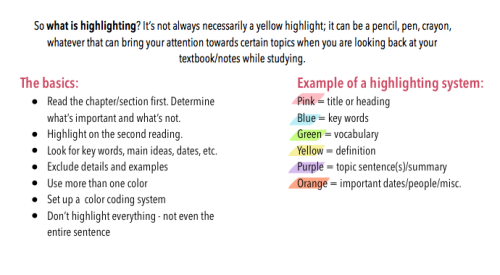
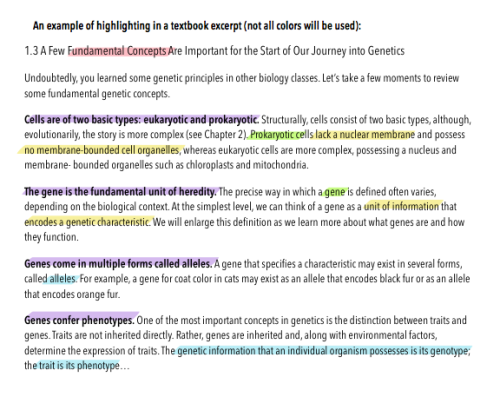
A brief informative guide to highlighting your notes/book the right way so it doesn’t look like your book/notes exploded into a rainbow.
More Posts from Freakinfiction and Others
Writing Notes: Halloween

REFERENCES (Banshee; Ghost; Ghoul; Goblin; Haunt; Specter; Vampire; Wraith; Origins of Halloween)
Banshee
A female spirit in Gaelic folklore whose appearance or wailing warns a family that one of them will soon die.
Banshee came from combining the Gaelic words meaning “woman of fairyland,” but any positive associations with fairies ends there.
Are female spirits that, if seen or heard wailing under the windows of a house, foretell of a death in the family that lives there.
Today, the word is most frequently heard in the idiom “scream like a banshee” or “wail like a banshee,” which shows the power of myth and the imaginative power of language, since probably no one has actually heard one.
Ghost
Most common meaning today is “a disembodied soul” or “the soul or specter of a deceased person”, which came next, a meaning based on the ancient folkloric notion that the spirit is separable from the body and can continue its existence after death. It originally meant “vital spark” or “the seat of life or intelligence,” which is still used in the phrase “give up the ghost.”
An older spelling of ghost, gast, is the root of aghast (“struck with terror, shocked”) and ghastly (“frightening”).
The German word for ghost, geist, is part of the word zeitgeist, which literally means “spirit of the time.”
Ghoul
A legendary evil being that robs graves and feeds on corpses.
Ghoul is a relatively recent English word, borrowed from Arabic in the 1700s.
Because it’s spelled with gh-, it looks vaguely like the Old English words ghost and ghastly (which share a common root in the Old English word gāst, meaning “spirit” or “ghost”).
In fact, it comes from the Arabic word ghūl, derived from the verb that means “to seize,” and originally meant “a legendary evil being held to rob graves and feed on corpses.” The word was introduced to western literature by the French translation of Arabian Nights.
Goblin
An ugly or grotesque sprite.
Usually mischievous and sometimes evil and malicious.
Haunt
To visit or inhabit as a ghost.
However, this is not the original sense of the word.
For centuries, it had a perfectly unfrightening set of meanings: “to visit often” and “to continually seek the company of.”
In the 1500s, it began to mean “to have a disquieting or harmful effect on,” as in “that problem may come back to haunt you.” The meaning here is simply the lingering presence of the problem, not the possibly scary nature of the problem itself; it is applied to thoughts, memories, and emotions.
The noun haunt retains this fright-neutral definition, “a place that you go to often,” as in “one of my favorite old haunts.”
A lingering idea, memory, or feeling may have led to the ghostly meaning of haunt, or one by a disembodied or imaginary spirit.
Specter
A visible disembodied spirit.
Specter originally meant “a visible disembodied spirit” in English—a good synonym for ghost. But, unlike ghost, the notion of being visible is paramount in specter, which came to English from the French word spectre, which developed directly from the Latin word spectrum, meaning “appearance” or “specter,” itself based on the verb specere, meaning “to look.”
Specere is also the root of many English words that have to do with appearance: aspect, conspicuous, inspect, perspective, and spectacle.
Vampire
The reanimated body of a dead person believed to come from the grave at night and suck the blood of persons asleep.
Legends of bloodsucking creatures go back to Ancient Greece, with harrowing tales of them rising from burial places at night to drink peoples’ blood before hiding from dawn’s daylight. These stories were popular in eastern Europe.
Originally comes from the Serbian word vampir, which then passed from German to French, coming to English in the 1700s.
The extended senses of vampire, “one who lives by preying on others” and a synonym of vampire bat, were both in use within a few decades.
Wraith
The exact likeness of a living person seen usually just before death as an apparition. The distinguishing quality of a wraith, compared with other ghosts, is its specificity.
Originally, it referred to either the exact likeness of a living person seen as an apparition just before that person’s death as a kind of spectral premonition of bad news, or a visible apparition of a dead person.
When referring to a living person, it’s a synonym of doppelgänger, or the “spirit double” of a living person (as opposed to a ghost, which refers to the spirit of a dead person). Doppelgänger is now frequently used in a broader sense to mean simply “someone who looks like someone else.”
When referring to a dead person, wraith is a synonym of revenant, which originally referred to a ghost of a particular person and subsequently has been used for a person who returns after a long absence.
ORIGINS OF HALLOWEEN
The traditions of Halloween have their origins in Samhain, a festival celebrated by the Celts of ancient Britain and Ireland.
Samhain marked the end of summer and the onset of winter, and occurred on a date that corresponds to our November 1st.
It was believed that during the Samhain festival, the world of the gods was visible to humans, and the gods took advantage of this fact by playing tricks on their mortal worshippers. Those worshippers in turn responded with bonfires on hilltops and sometimes masks and other varied disguises to keep ghosts from being able to recognize them. Things tended to get spooky and dangerous around Samhain, with bloody sacrifices and supernatural phenomena abounding.
Samhain chugged along for centuries, until Christianity poked its nose in: in the 8th century CE, All Saints' Day, a somewhat new Christian holiday, got moved from May 13th to November 1st.
The evening before All Saints' Day became a holy—that is, a hallowed—eve. Within a few centuries, Samhain and the eve of All Saints' Day had been merged into a single holiday. Protestants of the Reformation and all that came after largely rejected the whole thing, but the holiday persisted among some communities.
19th-century immigrants to the U.S., including many from Ireland, brought their Halloween customs with them and deserve no small amount of credit for the holiday as it's celebrated in the U.S. today.
More: Writing Notes & References ⚜ Word List: October


Scrolling through nct's account and I decided to become angsty
Writing Notes: Character Development
Rick Riordan's Writing Tips

Rick Riordan:
Character development is paramount for me. I firmly believe that plot and character development must occur simultaneously. Plot cannot be left to chance. Neither can characters be automatons who carry out actions envisioned in the author's master plan. Below are some things I try to keep in mind when developing my characters:
RICK RIORDAN'S TOP 5 TIPS ON CHARACTER
Define a character first through action, second through dialog and description, never through explanation.
A character should be primarily defined by the choices he makes, and the actions he takes.
How does he respond to violence?
How does he respond to love?
Secondly, a character must be vividly but deftly describe through his speech, and through the initial view you give the reader.
Never stop to explain who a character is when we can watch him in action and decide for ourselves.
Be impressionist rather than realistic.
Describe characters as Dickens did – with a single deft stroke.
A laundry list of physical traits is realistic, but it is neither memorable nor compelling.
A jarring metaphor for the character, or a focus on one mannerism or physical trait, can be very compelling.
Example: She was a human tornado.
Do not be afraid to use real people as models, but do not be constricted by your models.
It is very natural to use parts of ourselves or the people we know when creating characters.
Do not be afraid to do this because someone might get mad at you.
At the same time, let your character develop.
Do not force them to do what the real-life model would do.
Characters seldom end up exactly like the real people they are based on.
The reader does not have to be told everything you know about the character.
It may be critically important to you that your character has blue eyes, or went to Texas A&M.
But if these details have no part in the story, the reader will not care.
Leave them in your subconscious.
If you are having trouble figuring out a character, fill out a character profile, or do some journaling in that character's voice.
Your character must act, not simply be acted upon.
We care about characters because we are interested in the choices they make.
We want to boo the villain, cheer the hero, and cry with frustration when the tragic figure makes the wrong move.
A character who does not act, but simply receives information and is acted upon by outside forces, is not a character who will compel the reader.
Remember, plot is what the characters do next.
If the characters do not create the plot, the plot is hollow.
Here's a character profile worksheet I sometimes fill out if I'm having trouble understanding a particular character I've created:
Character Profile
Name:
Height:
Age in story:
Birthplace:
Hair color, length, style:
Race/nationality:
Regional influences:
Accent: (include voice, style of speech, slang, signature phrases or words)
Religion:
Marital status:
Scars or other notable physical attributes:
Handicaps: (emotional, physical, mental)
Athletic? Inactive? Overall health?
Style of dress:
Favorite colors:
How does the character feel about his/her appearance?
Brothers/sisters:
Relationship with parents:
Memories about childhood:
Educational background: (street smart? Formal? Does he/she read?)
Work experience:
Occupation:
Where does the character live now? Describe home (emotional atmosphere as well as physical)
Neat or messy?
Sexual preferences/morals/activities:
Women friends/men friends:
Pets?
Enemies? Why?
Basic nature:
Personality traits (shy, outgoing, domineering, doormat, honest, kind, sense of humor):
Strongest trait:
Weakest trait:
What does the character fear?
What is the character proud of?
What is the character ashamed of?
Outlook on life (optimistic, pessimistic, cynic, idealist)
Ambitions:
Politics:
How does the character see himself/herself?
How is the character seen by others?
Do you like this person? Why or why not?
Will readers like or dislike?
Most important thing to know about this character:
Present problem:
How it will get worse:
What is the character's goal in the story?
What traits will help/hurt the character in achieving this goal?
What makes the character different from similar characters?
Why will readers remember this character vividly?
Source
Some Geology Vocabulary

for your next poem/story (pt. 1)
Abyssal plain - A flat region of the deep ocean floor.
Aeolian - Describes materials formed, eroded, or deposited by or related to the action of wind.
Braided stream - A sediment-clogged stream that forms multiple channels that divide and rejoin.
Colluvium - A general term applied to loose and incoherent deposits, usually at the foot of a slope or cliff and brought there chiefly by gravity.
Conchoidal - Resembling the curve of a conch shell and used to describe a smoothly curved surface on a rock or mineral; characteristic of quartz and obsidian.
Devitrification - Conversion of glass to crystalline material.
Dune - A low mound or ridge of sediment, usually sand, deposited by the wind.
Ephemeral lake - A short-lived lake.
Estuary - The seaward end or tidal mouth of a river where freshwater and seawater mix.
Euhedral - A grain bounded by perfect crystal faces; well-formed.
Fenestral - Having openings or transparent areas in a rock.
Fluvial - Of or pertaining to a river or rivers.
Friable - Describes a rock or mineral that is easily crumbled.
Granoblastic - Describes the texture of a metamorphic rock in which recrystallization formed crystals of nearly the same size in all directions.
Hermatypic - Describes a type of reef-building coral that is incapable of adjusting to conditions lacking sunlight.
Hot spring - A thermal spring whose temperature is above that of the human body.
Isthmus - A narrow strip or neck of land, bordered on both sides by water, connecting two larger land areas.
Lacustrine - Describes a process, feature, or organism pertaining to, produced by, or inhabiting a lake.
Lithify - To change to stone, or to petrify; especially to consolidate from a loose sediment to solid rock.
Lunar tide - The part of the tide caused solely by the tide-producing force of the Moon.
Source ⚜ More: Word Lists

The summer before 2nd year
You know what, since I’m thinking about it anyways, let’s talk formalwear accessories. Most of these are traditionally menswear but a bit of gender fuckery is good for the soul, and frankly most of these are about making your mass-produced clothing fit and lay properly without having to go to the tailor.
Shirt stays: these go around your thighs to hold your shirt down, so that it stays smooth and tucked in. They’re usually elastic, with 1-3 clips, and if you wear skirts frequently this is a GREAT way to make sure your top doesn’t ride up. The clips will be visible if you’re wearing something tight, so loose pants or skirts are where these do best. There’s also an insane version that clips to your socks, but that is for lunatics. If you wanted, you could also use one of these clips to hold up thigh-highs.
These do a great job of smoothing and narrowing the waist area by keeping your shirt from bunching there.


Sleeve garters: usually metal, leather, elastic, or silk. These are usually worn with button-down shirts to adjust where your cuff falls on the wrist or hand. They’re properly worn on the upper arm, and you pull the fabric of the sleeve above the garter until you cuff is where you want it. Because this creates a puff of sleeve at the bicep, it also broadens the appearance of the shoulders. It’s great if you’re working with your hands or if your sleeves are often too long for your preference.


Waistband clip or belt adjustment clip/buttons
Three different ways of tightening the waistband of a pair of pants or a skirt. You’re not going to get more than an inch or so tighter without weird bunching, and for most of these you’d want them to be hidden under a shirt or jacket, but they do the job if that’s something you’re having issues with.
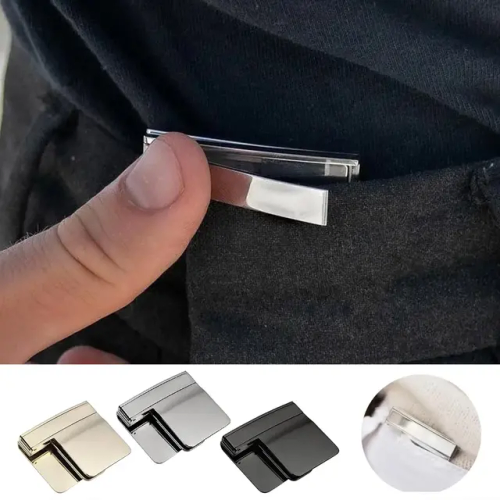


Collar pins: There are so many fun ones out there, both with and without chains. They’re not terribly practical, though the slight weight may help keep your collar where you want it. Also consider collar tips, which pin (surprise) to the very tips of your collar points.


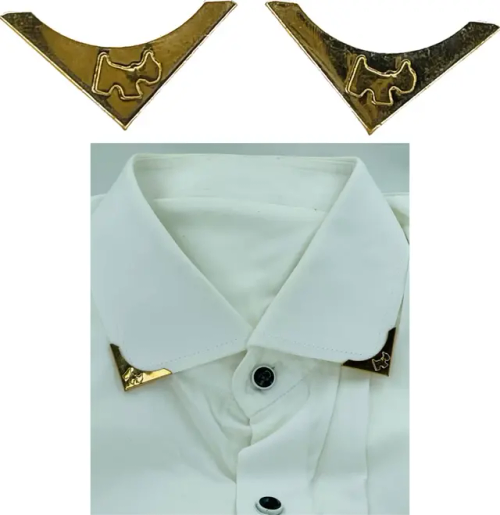
Sweater clips/guards: meant to hold your sweater or cardigan mostly closed. Great if your cardigan doesn’t button, or if you don’t like it to be buttoned all the way.
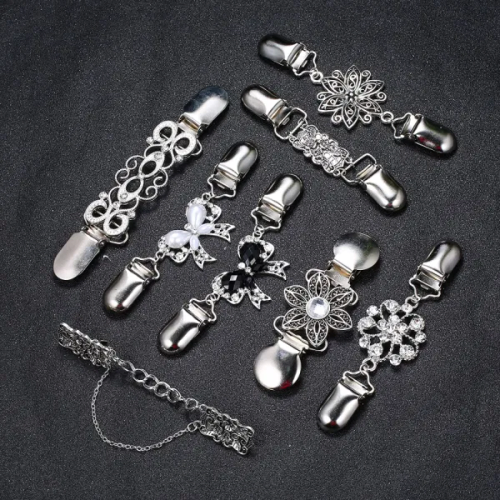

There’s tons of other stuff out there like this–etsy is a great place to find this stuff. A lot of these are old solutions to the very modern problem of mass-maufactured clothes not being as one-size-fits-all as advertised, but they’re also a fun way to put a bit of personality into businesswear.
🎶 哏德全(GenDeQuan) 葫蘆絲(HuLuSi) 阿佤人民唱新歌(AWaRenMinChangXinGe)
📸 Taobao
Writing Resources PDFs
As requested: https://www.writersarchive.com/
The documents contain sensitive themes and topics (e.g., related to death).
Some notes are from my old files, which may include outdated information. Others were made in response to a request. I also included a few references that are still in my queue & drafts.
Choose which tips & notes are most appropriate for your own writing. Some are just quick references. Thus, more research may be needed for your written work.
Updates may be made in irregular intervals for added material and/or corrections.
All PDFs are free. You can pay what you want/can here. There's a very small fee to keep the site up. But please don't feel obligated to, especially if you're in a rough patch at the moment—been there (+ it is the holiday season after all, which I know can be a tough time). Writing has always been a safe space for me, so if these references help you as well, that would be more than enough for me.
Thank you to everyone who had been so encouraging about this little project.
And thank you especially to @beforeyearning for creating the site ily (please follow his blog, he's a very talented writer).
rare words

It's only the start of the year but I'm tired already
-
 nerdhelp reblogged this · 1 week ago
nerdhelp reblogged this · 1 week ago -
 simsimousse liked this · 2 weeks ago
simsimousse liked this · 2 weeks ago -
 carlysstyle liked this · 4 months ago
carlysstyle liked this · 4 months ago -
 dmtcelebi liked this · 9 months ago
dmtcelebi liked this · 9 months ago -
 twadi-gurl reblogged this · 10 months ago
twadi-gurl reblogged this · 10 months ago -
 leda-timeandspace liked this · 11 months ago
leda-timeandspace liked this · 11 months ago -
 zubiiidooo liked this · 1 year ago
zubiiidooo liked this · 1 year ago -
 hwaseongstudies reblogged this · 1 year ago
hwaseongstudies reblogged this · 1 year ago -
 still4jransone liked this · 1 year ago
still4jransone liked this · 1 year ago -
 dinahjane97 liked this · 1 year ago
dinahjane97 liked this · 1 year ago -
 sifusssigesa liked this · 1 year ago
sifusssigesa liked this · 1 year ago -
 pompuriathewitch liked this · 1 year ago
pompuriathewitch liked this · 1 year ago -
 dntmssupmytempo liked this · 2 years ago
dntmssupmytempo liked this · 2 years ago -
 hysteric-sapphic liked this · 2 years ago
hysteric-sapphic liked this · 2 years ago -
 raptures-of-the-deep reblogged this · 2 years ago
raptures-of-the-deep reblogged this · 2 years ago -
 abeesnail liked this · 2 years ago
abeesnail liked this · 2 years ago -
 getbacktofandomlife reblogged this · 2 years ago
getbacktofandomlife reblogged this · 2 years ago -
 ayanatryv liked this · 2 years ago
ayanatryv liked this · 2 years ago -
 ahnotado reblogged this · 2 years ago
ahnotado reblogged this · 2 years ago -
 xanswilltolive liked this · 2 years ago
xanswilltolive liked this · 2 years ago -
 itzjustadream19 liked this · 2 years ago
itzjustadream19 liked this · 2 years ago -
 jieunzs reblogged this · 2 years ago
jieunzs reblogged this · 2 years ago